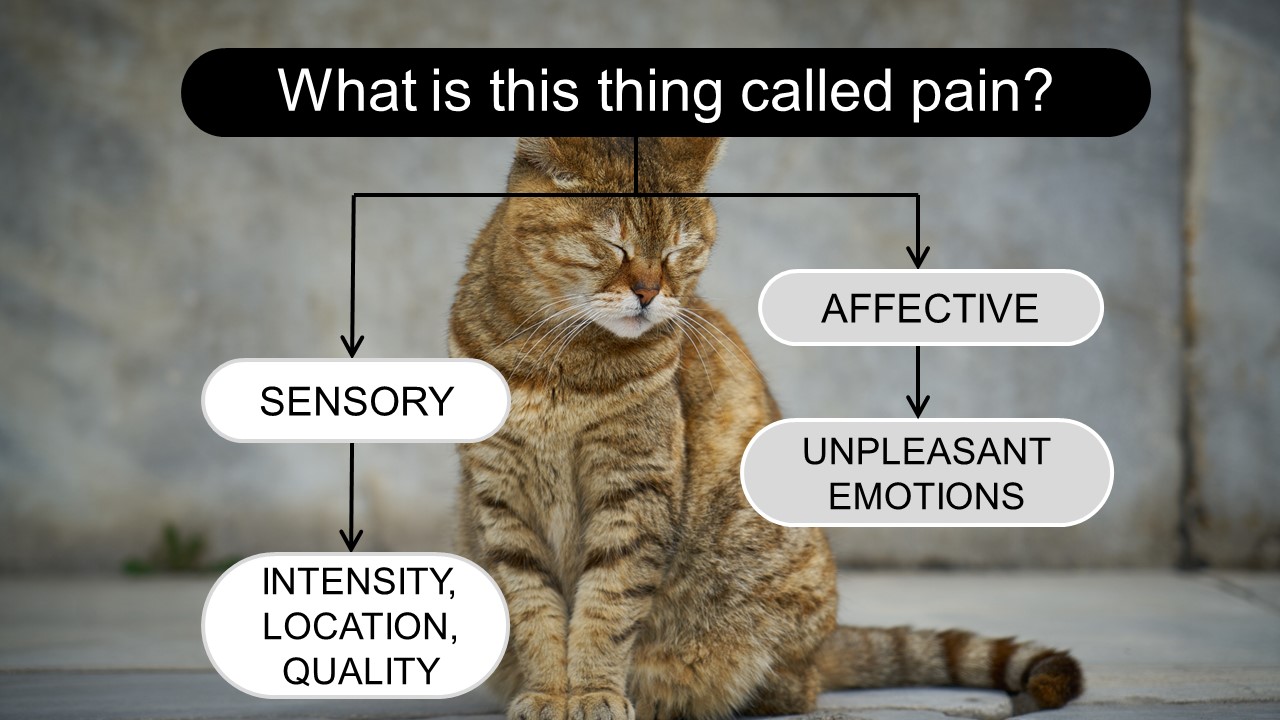Primary Goal
The primary goal of therapy is to minimize the patient’s pain. A crucial component of effective analgesia is the knowledge that pain is dynamic (i.e., not static) and needs continued reassessment, both by the veterinarian and the caregiver, which is an integral part of successful therapy. Describing pain as ‘dynamic’ refers to the fact that pain can both increase and decrease over time and so pain management should be adapted accordingly. All pain conditions require regular re-assessment of the patient.

Pain, by definition, has both sensory (the sensation of pain) and emotional (the impact of pain on the patient) components. Thus, also crucial to effective therapy is the knowledge that pain management is not solely the administration of pharmacologic or nonpharmacologic treatments, but also the support of the patient’s wellbeing. This ladder below is an overview of treatment goals (See flowchart below). Specific therapy will be based on each patient’s pain level and the caregiver’s ability to treat without being overburdened. If pain is moderate to severe, treatment should be more ‘comprehensive’ in order to both control pain at the moment and decrease the likelihood that pain will become maladaptive.


aAdditional information can be found in the 2021 AAFP Senior Care Guidelines.
bAdditional information can be found in the 2021 AAHA/AAFP Feline Feline Life Stage Guidelines.
cAdditional information can be found in the 2023 AAFP/IAAHPC Feline Hospice and Palliative Care Guidelines.
Additional information on environmental modifications can be found under Patient Support.
